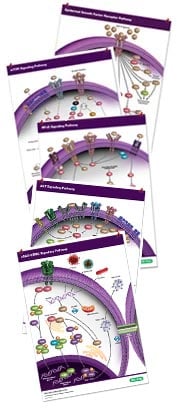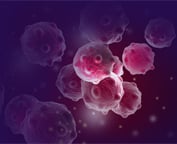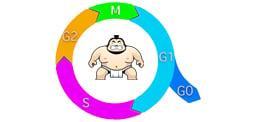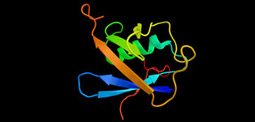Sumoylation Mediated Signaling

- On This Page
- Antibodies for the analysis of sumoylation
- Sumoylation antibodies
- Our sumoylation antibody range
- References
s
Western Blot University
s
What are R-loops?
s
Cancer Pathway Posters

Compiling key proteins involved in key signaling pathways: cGAS-STING, EGF R, mTOR, NF-kB, and PI3/AKT pathways.
s
Recent Blog
Antibodies for the Analysis of Sumoylation
Recent blog
SUMOylation: a heavyweight in the regulation of cell cycle progression and cell proliferation.
Podcast
Studying SUMOylation: An overview of SUMOylation and tips to help you study this post-translational modification.
Sumoylation, the covalent attachment of a small ubiquitin-like modifier (SUMO) moiety to lysine residues, is involved in the regulation of a variety of cellular processes and cell signaling pathways, such as the NF-kappa B pathway (Mabb and Miyamoto 2007).
Four different SUMO proteins, SUMO-1, SUMO-2, SUMO-3, SUMO-4, and SUMO-5 have been identified in mammals, which as their name implies, are all relatives of ubiquitin (Coelho-Silva et al. 2017, Enserink 2015).
Like ubiquitination, sumoylation is a multi-step reversible process orchestrated by four distinct enzyme classes. In order to activate SUMO molecules, SUMO precursor proteins are cleaved by cysteine proteases belonging to the sentrin specific proteases (SENPs) family into their mature form (Nayak and Müller 2014, Sarge and Park-Sarge 2009).
Some SENPs perform a dual-role, since they also function as deubiquitination enzyme (DUB) equivalents by deconjugating sumo moieties from proteins (Nayak and Müller 2014).
The E1 activating enzyme in the context of sumoylation is a heterodimer formed by sumo-activating enzyme subunit 1 (SAE1) and sumo-activating enzyme subunit 2 (SAE2), which acts as the only SUMO activating enzyme in mammals (Enserink 2015). The E1 enzyme then transfers the SUMO molecule to the E2 conjugating enzyme, Ubc9 (Enserink 2015).
Similar to the E1, Ubc9 is the only E2 enzyme present in mammals (Enserink 2015). The role of E3 SUMO ligases, such as PIAS3, appears to be much less important compared to ubiquitin ligases. However, SUMO ligases have been reported to contribute to both the specificity and efficiency of transferring SUMO moieties to substrates (Enserink 2015).
Similar to ubiquitination, aberrant sumoylation has become an important area of study in the context of common disorders such as cancer and neurodegenerative diseases (Sarge and Park-Sarge 2009).
Sumoylation Antibodies
Bio-Rad offers a variety of antibodies for the detection of sumoylation events and the characterization of sumoylation machinery members by ELISA, immunofluorescence, immunohistochemistry and western blotting.
Our Sumoylation Antibody Range
| Description | Target | Format | Clone | Applications | Citations | Code |
|---|
- Growth factors
- EGF R resources
- Kinases
- mTOR signaling pathway
- Transcription factors
- Translation factors
- Phosphatases
- Phosphatases in cancer
- Phospho-Specific precisionAb antibodies
- Phospho-specific antibodies
- Ubiquitination mediated signaling
- Tyrosine phosphorylation of EGF R
- Signal transduction antibodies
References
- Coelho-Silva L et al. (2017). SUMOylation and calcium signaling: potential roles in the brain and beyond. Neuronal Signaling Vol 1, issue 3.
- Enserink JM (2015). Sumo and the cellular stress response. Cell Division 10, 4.
- Mabb AM and Miyamoto S (2007). SUMO and NF-kappaB ties. Cell Mol Life Sci 64, 1979-1996.
- Nayak A and Müller S (2014). SUMO-specific proteases/isopeptidases: SENPs and beyond. Genome Biology 15, 422.
- Sarge KD and Park-Sarge O (2009). Sumoylation and Human Disease Pathogenesis. Trends Biochem Sci 34, 200-205.







